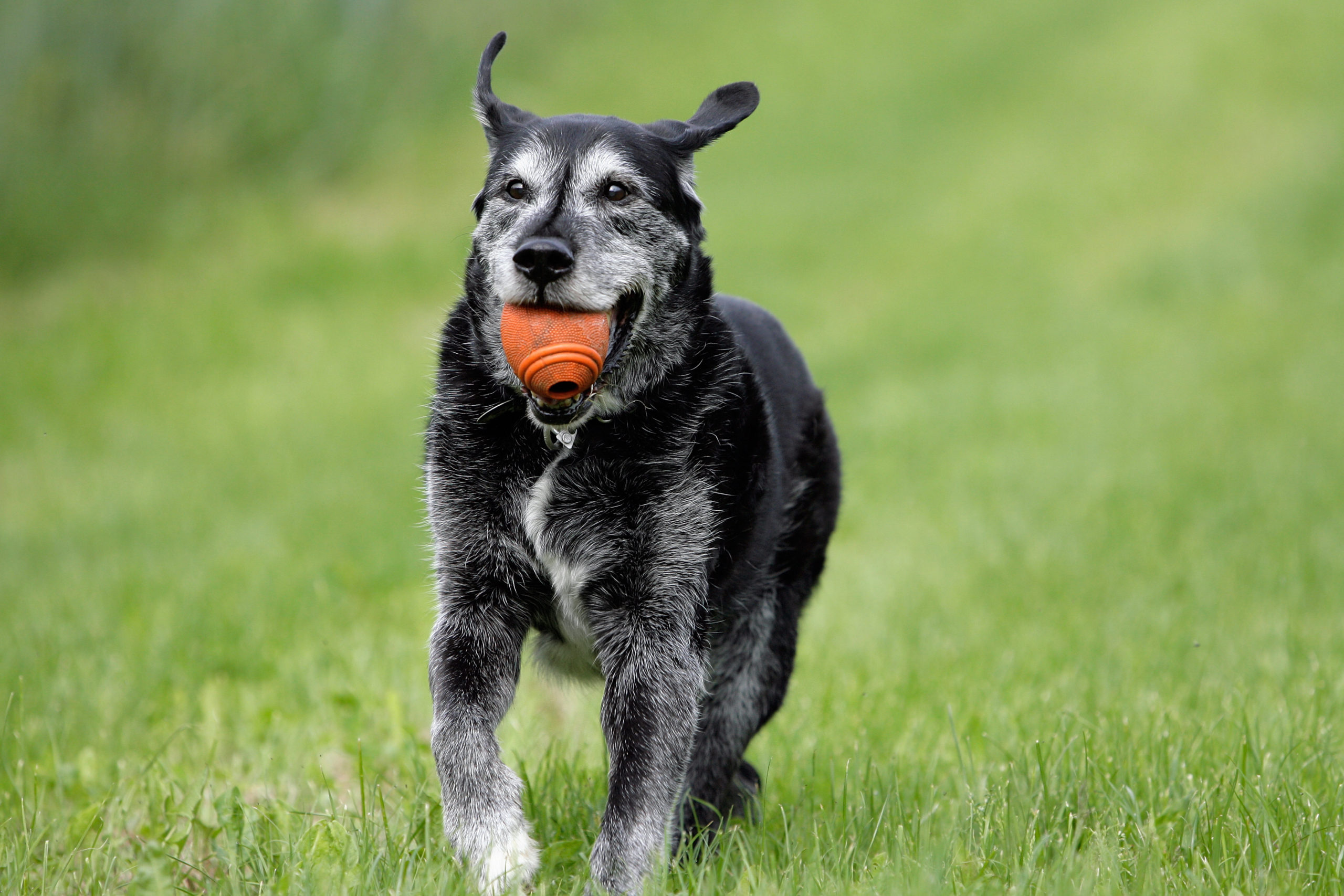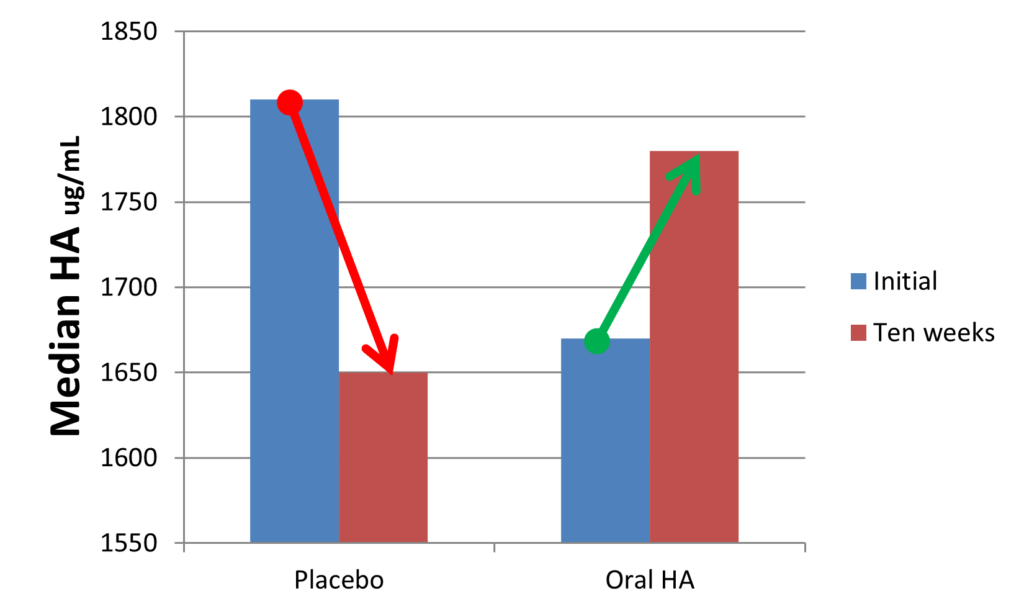
Background
Degenerative joint disease encompasses a wide range of diseases with osteoarthritis (OA) affecting 20% of all dogs and 80% in dogs greater than 8 years. In its advanced stages, OA can be painful and debilitating. Treatment of OA typically centers on reduction of pain and increased mobility.
A key component of synovial is hyaluronan also called hyaluronic acid (HA) which is able to bind and retain water achieving excellent viscoelasticity. These properties make HA act as a lubricant and shock absorber, extremely useful in joints.
Chondrocytes within the joint produce synovial fluid. As OA advances mechanical damage and inflammation can result in chondrocyte death. Early treatment works to stimulate synovial fluid production and helps to delay the progression of the disease.
Oral Hyaluronic Acid Supplementation
HA, a disaccharide polymer, ranges in length from 5 kDa to 20,000 kDa. Isotopic tracer studies show intestinal absorption of 80% when a mid-sized molecular weight (MW) is used. In fact, the MW weight of oral HA is critical for the effective treatment of OA. Very high MW HA (>2,000 kDa) is too large to be absorbed well through the intestinal barrier and low MW HA can be pro-inflammatory (1).
In a study looking at radioactively labeled 1,000 kDa oral HA in rats, scans showed significant uptake within the joints of 100-300 times greater than the control group (2).
Featured Study
To evaluate if oral HA supplementation is effective in stimulating the production of HA and the reduction of inflammatory markers, a cohort of 55 dogs undergoing CCL surgery were divided into two groups for a prospective, randomized, double-blinded, clinical study (3). One group was provided 800-1000 kDa HA, and the other a placebo. Over a ten week recovery synovial fluid was examined for HA and other biomarkers.

In dogs supplemented with oral HA, synovial fluid HA concentration significantly increased whereas the placebo group declined. Additionally, pro-inflammatory marker paraoxonase-1 significantly declined in the HA group. The authors stated, “the results demonstrated that postoperative oral administration of HMW-HA in canine patients with OA secondary to CCL injury leads to improvements in OA biomarkers measured in synovial fluid, specifically in HA and PON-1 concentrations”.
Conclusion
Oral HA supplementation in the range of 750-2,000 kDa is effectively absorbed and distributed to joints and helps to stimulate synovial fluid production.
References
- Gupta RC, Lall R, Srivastava A, Sinha A. Hyaluronic Acid: Molecular Mechanisms and Therapeutic Trajectory. Front Vet Sci. 2019 Jun 25;6:192. doi: 10.3389/fvets.2019.00192. PMID: 31294035; PMCID: PMC6603175.
- Da Riz F, Higgs P, Balogh L, Polyak A, Mathe D, Kiraly R, Thuroczy J, Terez M, Janoki G, Ting Y, Bucci LR, Schauss AG. Absorption, uptake and tissue affinity of high-molecular-weight hyaluronan after oral administration in rats and dogs. J Agric Food Chem. 2008 Nov 26;56(22):10582-93. doi: 10.1021/jf8017029. PMID: 18959406.
- Serra Aguado CI, Ramos-Plá JJ, Soler C, Segarra S, Moratalla V, Redondo JI. Effects of Oral Hyaluronic Acid Administration in Dogs Following Tibial Tuberosity Advancement Surgery for Cranial Cruciate Ligament Injury. Animals (Basel). 2021 Apr 27;11(5):1264. doi: 10.3390/ani11051264. PMID: 33925642; PMCID: PMC8146498.
